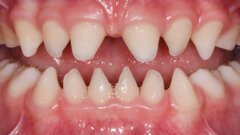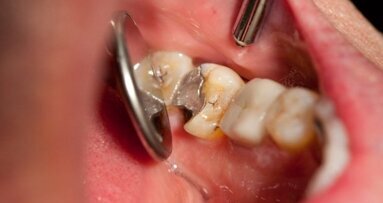OULU, Finland: Although the relationship between the use of snus and lifestyle-related habits has not been widely investigated yet, some studies have suggested that smokeless tobacco use could be a gateway to cigarette smoking. Aiming to shed light on the issue, researchers from the University of Oulu have now investigated the association between snus use and habits and attitudes regarding cigarette smoking and alcohol consumption among Finnish adolescents.
The study was conducted as part the country’s National School Health Promotion Study, a research programme that was established in 2000 in order to monitor the health and well-being of Finnish adolescents. Data about snus use, habits and attitudes concerning smoking and alcohol consumption, as well as age, sex, school type and parents' educational and smoking background, was collected via a questionnaire. Altogether, 183,226 Finns between the ages of 13 and 19 participated in the survey.
More than two-thirds of the adolescents held positive attitudes towards smoking and alcohol, at 71 per cent and 67 per cent, respectively. Of the young Finns surveyed, 18 per cent had used snus in the past. Overall, snus use was more common among boys than girls. As for smoking, the study showed that 19 per cent of the participants smoked daily and 15 per cent were occasional smokers. Regarding alcohol, 11 per cent reported consumption of alcohol weekly and 57 per cent monthly or less frequently.
The analyses showed that adolescents’ current snus use was strongly related to their smoking habits and attitudes towards smoking. Moreover, current snus users tended to be current smokers and reported positive attitudes towards smoking. The latter finding proved to be consistent across all school types and for both sexes.
Other factors that were significantly associated with adolescents' current snus use in the study were male sex, weekly consumption of alcohol and higher parental education, whereas parental smoking did not. According to the researchers, the results suggest that snus use among adolescents may signal an accumulation of other lifestyle-related risk behaviours, such as current or past smoking and alcohol consumption, as well as a positive attitude towards smoking. Thus, co-existing health-related risk factors, as well as sex and educational background, should be taken into account in order to target preventive messages more effectively through health promotion activities, they concluded.
The use of a diversity of non-conventional tobacco products has become commonplace and even increased in many countries, such as Sweden, Norway and Finland, in recent decades. In Finland, snus use among the youth is increasing despite an EU ban on the sale of snus since Finland joined the EU in 1995. As recently reported by Helsinki Times, personal imports of snus have increased by 65 per cent since 2008. According to statistics released by the Finnish tobacco industry and the National Supervisory Authority for Welfare and Health, Finnish residents brought a total of 600 million cigarettes and 10 million tins of snus into the country over the past 12 months.
Although smokeless tobacco such as snus has been found to be less harmful then cigarettes, it can cause mouth sores and dental cavities and generally raises the risk of several diseases, including oral cancer, pancreatic cancer and oesophageal cancer.
The study, titled “Use of snus, its association with smoking and alcohol consumption, and related attitudes among adolescents: The Finnish National School Health Promotion Study”, was published on 24 October in the Tobacco Induced Diseases journal.
PENNSYLVANIA, U.S.: Child obesity throughout the Western world is becoming more of a common problem. In a new study that may help our comprehension of the ...
STONY BROOK, N.Y., US: The applicability and efficacy of artificial intelligence (AI) within dentistry appears to be limitless. With each passing day, ...
DUNEDIN, New Zealand: In a new study researchers have found a connection between diets with high intakes of fibre and wholegrain foods and a reduction in ...
COPENHAGEN, Denmark: Snus use by young people in Denmark has increased considerably in recent years, and the Danish Dental Association has expressed its ...
HOUSTON, U.S.: A balanced oral microbiome can contribute to good cardiovascular health by converting dietary nitrate into nitric oxide (NO), a signaling ...
BALTIMORE, U.S.: With promises of whiter and cleaner teeth, charcoal-based oral hygiene products have enjoyed a boost in popularity in recent times, with ...
LONDON, England: While chewing gum may be considered a somewhat undesirable habit, sugar-free varieties have been proved to be highly beneficial for oral ...
ŌTSU, Japan: The links between diabetes, obesity and periodontal disease are well established; however, most studies on their associations have had sample ...
KUOPIO, Finland: A large Finnish population-based study has assessed periodontitis using salivary biomarkers—rather than clinical and radiographic oral ...
PITTSBURGH, U.S.: For a long time in dentistry, filling materials have been a topic of intense interest and now new research out of the U.S. and Brazil has ...
A recent surge of innovations has sparked a transformative wave in the field of dentistry, reshaping the landscape of oral healthcare. In this interview, Dr...
Live webinar
Wed. 14 January 2026
12:00 pm EST (New York)
Dr. Théo Laplane, Dr. Robert Gottlander DDS
Live webinar
Fri. 16 January 2026
12:00 pm EST (New York)
Live webinar
Mon. 19 January 2026
1:00 pm EST (New York)
Philipp Kopp, Michael Seeber
Live webinar
Thu. 22 January 2026
9:00 am EST (New York)
Prof. Judith Jones D.D.S; M.P.H., Prof. Kakuhiro Fukai D.D.S., Ph.D, Dr. Bathsheba (Bethy) Turton
Live webinar
Thu. 22 January 2026
2:00 pm EST (New York)
Dr. Nicola M. Grande DDS, PhD
Live webinar
Wed. 28 January 2026
8:00 am EST (New York)
Live webinar
Wed. 28 January 2026
11:00 am EST (New York)
Prof. Dr. Jan-Frederik Güth



 Austria / Österreich
Austria / Österreich
 Bosnia and Herzegovina / Босна и Херцеговина
Bosnia and Herzegovina / Босна и Херцеговина
 Bulgaria / България
Bulgaria / България
 Croatia / Hrvatska
Croatia / Hrvatska
 Czech Republic & Slovakia / Česká republika & Slovensko
Czech Republic & Slovakia / Česká republika & Slovensko
 France / France
France / France
 Germany / Deutschland
Germany / Deutschland
 Greece / ΕΛΛΑΔΑ
Greece / ΕΛΛΑΔΑ
 Hungary / Hungary
Hungary / Hungary
 Italy / Italia
Italy / Italia
 Netherlands / Nederland
Netherlands / Nederland
 Nordic / Nordic
Nordic / Nordic
 Poland / Polska
Poland / Polska
 Portugal / Portugal
Portugal / Portugal
 Romania & Moldova / România & Moldova
Romania & Moldova / România & Moldova
 Slovenia / Slovenija
Slovenia / Slovenija
 Serbia & Montenegro / Србија и Црна Гора
Serbia & Montenegro / Србија и Црна Гора
 Spain / España
Spain / España
 Switzerland / Schweiz
Switzerland / Schweiz
 Turkey / Türkiye
Turkey / Türkiye
 UK & Ireland / UK & Ireland
UK & Ireland / UK & Ireland
 Brazil / Brasil
Brazil / Brasil
 Canada / Canada
Canada / Canada
 Latin America / Latinoamérica
Latin America / Latinoamérica
 USA / USA
USA / USA
 China / 中国
China / 中国
 India / भारत गणराज्य
India / भारत गणराज्य
 Pakistan / Pākistān
Pakistan / Pākistān
 Vietnam / Việt Nam
Vietnam / Việt Nam
 ASEAN / ASEAN
ASEAN / ASEAN
 Israel / מְדִינַת יִשְׂרָאֵל
Israel / מְדִינַת יִשְׂרָאֵל
 Algeria, Morocco & Tunisia / الجزائر والمغرب وتونس
Algeria, Morocco & Tunisia / الجزائر والمغرب وتونس
 Middle East / Middle East
Middle East / Middle East

















































To post a reply please login or register